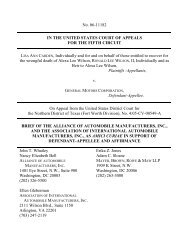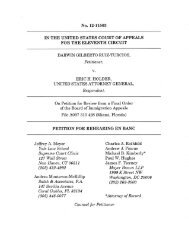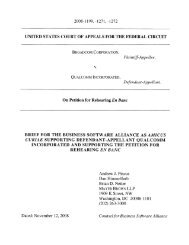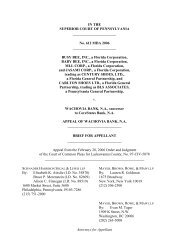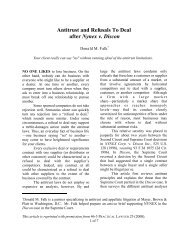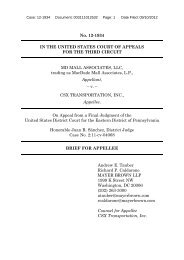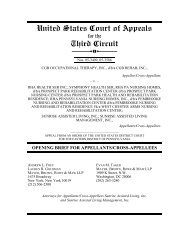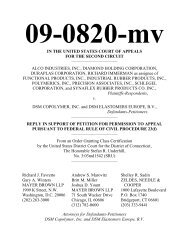No. 5-99-0830 IN THE APPELLATE COURT OF ... - Appellate.net
No. 5-99-0830 IN THE APPELLATE COURT OF ... - Appellate.net
No. 5-99-0830 IN THE APPELLATE COURT OF ... - Appellate.net
Create successful ePaper yourself
Turn your PDF publications into a flip-book with our unique Google optimized e-Paper software.
Second, plaintiffs sought “installation” damages to compensate those class members<br />
who actually received non-OEM parts for the cost of replacing them with OEM parts. Based<br />
on a variety of assumptions about average costs, Dr. Mathur estimated total installation<br />
damages for the class to be between $658,450,000 and $1,211,500,000. R. 7187-89. On<br />
cross-examination, he admitted that this estimate might be as much as $1 billion too high.<br />
R. 7238. Dr. Mathur also admitted that there was no way to obtain the data necessary to<br />
eliminate the uncertainty in his estimate — such as how many non-OEM parts were actually<br />
installed, how many failed to restore vehicles to their pre-loss condition, how many vehicles<br />
were still in the policyholders’ possession, how long a repair would take, how much labor<br />
would cost, what a rental car would cost in each particular area, and the like. R. 7232-36.<br />
Under ICFA, plaintiffs sought compensatory damages in the form of both<br />
specification and installation damages; they also asked the court to impose a constructive<br />
trust on the $130,269,000 in “savings” State Farm had realized by specifying non-OEM parts<br />
during the three-year ICFA class period. R. 7437-38. Plaintiffs made clear that they were<br />
not claiming both specification and disgorgement damages — because both were calculated<br />
based on the amounts State Farm had saved for its policyholders by specifying non-OEM<br />
parts. Instead, they viewed specification and disgorgement damages as alternative theories<br />
to support the same recovery. R. 2459-60, 13040; C. 29176.<br />
d. Directed Verdict Motion and Instructions. At the conclusion of plaintiffs’ case,<br />
and again at the close of the evidence, State Farm moved for decertification of the class or,<br />
in the alternative, a directed verdict on all claims. C. 29338, 29879. State Farm argued,<br />
among other things, that plaintiffs could not prevail on behalf of the entire class because they<br />
-23-



